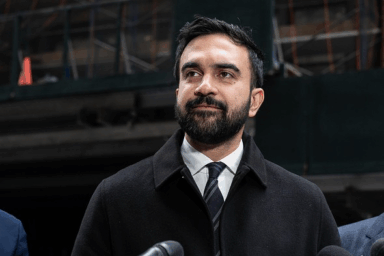The New York Times published a glowing profile yesterday of Steven Rattner, Obama’s lead adviser on the car-industry rescue. It’s so laudatory, in fact, that the reader is left wondering why someone of Rattner’s elite stature and stunning qualifications would accept a job that is clearly so beneath him—save perhaps his exceedingly noble commitment to public service.
Rattner began his career as a reporter. At the Times, he sparked a long-term friendship with publisher Arthur Sulzberger Jr., whom Rattner regularly advises on financial matters. He left journalism for Wall Street, where he enjoyed stints at Lehman Brothers, Morgan Stanley, and investment bank Lazard, before co-founding his own investment firm, Quadrangle Capital, which now manages the assets of Rattner’s personal friend, New York Mayor Michael Bloomberg. Rattner and his wife, Maureen White, are known as the “D.N.C.’s A.T.M.” for their fundraising prowess on behalf of Democrats.
The story leads with Rattner’s frustrated ambition to serve:
After 26 years as one of the most politically connected investment bankers on Wall Street, Steven Rattner finally took a job in Washington — only it is not quite the one friends and business associates thought it would be.
Washington buzzed that Mr. Rattner, a big name in the New York media world who, friends say, aspires to a cabinet post like Treasury secretary, would be named the car czar of the Obama administration. Instead, he is one of 14 people on a committee that is orchestrating the rescue of the giant automakers.
Still, Mr. Rattner, a well-known media banker, is playing a central role as car czar lite, traveling to Detroit to visit plants, meeting with the automakers’ bankers, unions and bondholders, and advising the White House on which companies seem salvageable and how. If he succeeds, he may get a chance at a larger job in the administration.
What makes Rattner especially suited to be “car czar lite”? Louise Story, the article’s author, allows Rattner’s friends from Wall Street to explain:
Friends of Mr. Rattner say it would be hard to find a better auto industry analyst. Orin Kramer, a hedge fund manager and important Obama fund-raiser, called Mr. Rattner “a superstar.”
Paul J. Taubman, head of investment banking at Morgan Stanley, said “he’s a very fast study.” And Henry Kravis, the private equity financier, said “he’s thoughtful, thorough and smart.”
Yes, it would be difficult to name a superior expert on the subject. Well, save perhaps those who, uh, have actual experience with the, you know, auto industry.
If you inferred from the preceding quotes that Story didn’t bother to talk to figures in the car biz, you’d be wrong:
There is no official head of the auto task force, but people in the auto industry say that Mr. Rattner seems to call the shots, and he is the highest-ranking task force official within Treasury. Most of the force is made up of younger people from Wall Street.
No, Story did talk to them. She just didn’t bother to quote them. And she had good reason, namely their prejudicial ressentiment:
He has to push the car companies to overhaul decades-old practices, persuade his former colleagues on Wall Street to lower their demands on the automakers’ debt payments and appeal to union leaders who may be turned off by Mr. Rattner’s financial success.
When I first read the story, I wondered whether it was a “beat sweetener,” the questionable journalistic practice of writing positive profiles of insiders to win them over as sources for future articles. But when I noticed the two photos of Rattner in his tortoise-shell glasses and the connection with Sulzberger Jr., I thought it stooped below even that level.
By the way, this may not be the first time Rattner’s friendship with Sulzberger Jr. has paid off. As Michael Wolff reported in February, Rattner enjoyed unusual success in squashing any coverage of his wife’s DWI; Mo was caught on the Throgs Neck Bridge driving with a blood-alcohol level at twice the legal limit.
Lest we think friendship with a publisher precludes balanced coverage, compare Bloomberg’s January 14 article on Rattner, when he was a leading candidate to become Obama’s auto-industry adviser. Pay special attention to the quotes:
“What the industry needs is a combination of two kinds of people: Lee Iacocca and Jack Welch,” said Gerald Meyers, a business professor at the University of Michigan in Ann Arbor and former chief executive of American Motors Corp. “This guy doesn’t seem to be either, so I’m worried.” . . .
The industry’s preference for an overseer with a mastery of its workings and culture was voiced by Bill Ford, executive chairman of Ford Motor Co., on Jan. 11 at a dinner with reporters covering the North American International Auto Show in Detroit. “It would be really helpful to have somebody in there who would take the time to have a deep understanding of our industry,” Ford said. . . .
“I’ve read about Rattner, as well as others, but I simply don’t know if there’s any merit to any of these people being actually considered,” Fritz Henderson, GM’s chief operating officer, said yesterday.
If Bloomberg could do it, why couldn’t the Times?


